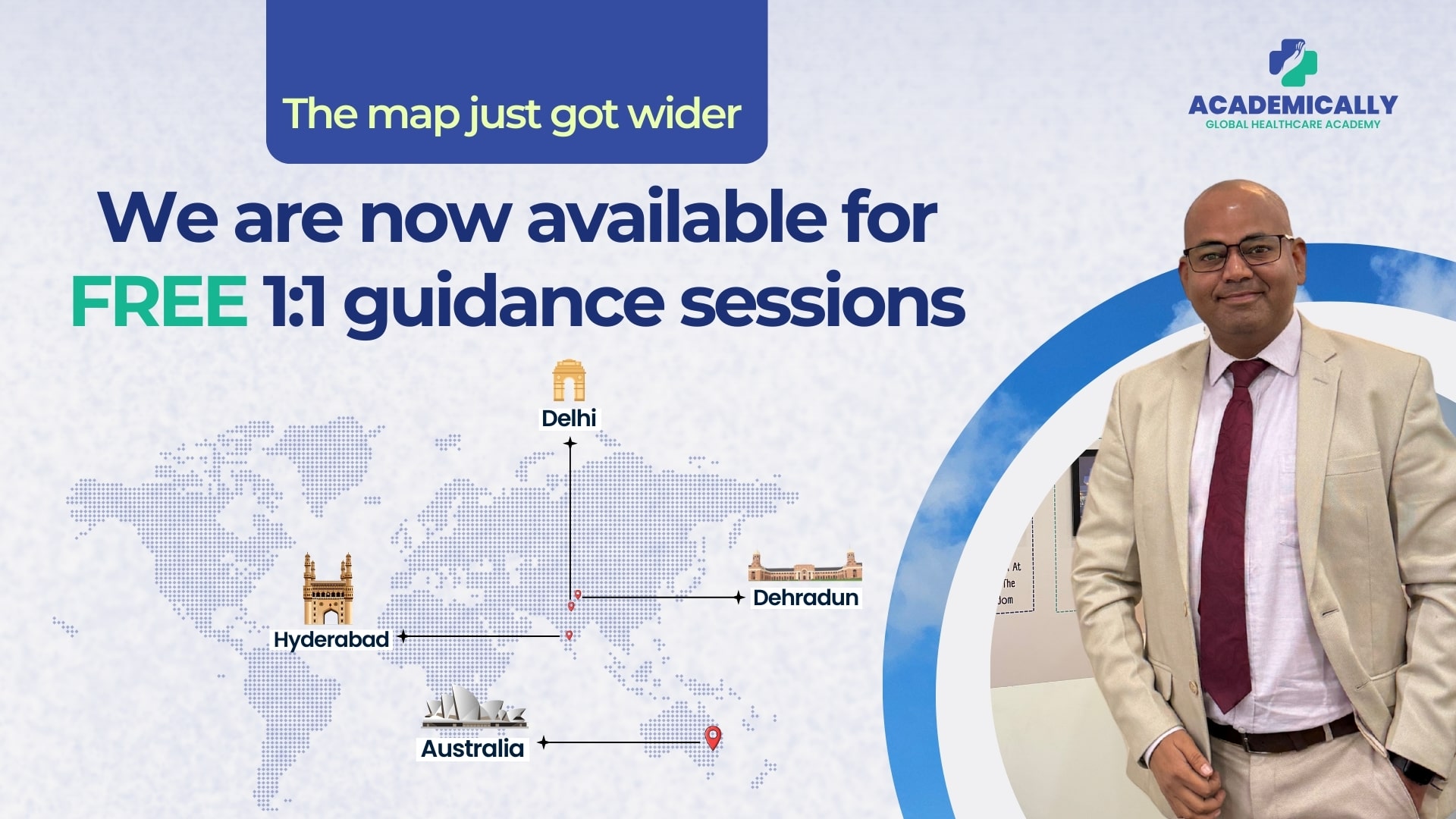Physiotherapy in India: Scope & Opportunities
India is witnessing a growing demand for physiotherapists, especially in urban areas, as people are becoming more aware of it. However, some real challenges still remain:
Limited government hiring: Public sector jobs for physiotherapists are scarce and often underpaid.
Modest starting salaries: New graduates in cities like Delhi or Mumbai often start with ₹18,000–₹30,000 per month.
Lack of specialization opportunities: Outside of metro cities, it’s difficult to find advanced training or niche practice areas like neuro or cardiac rehab.
That said, India is home to a thriving private healthcare industry and a massive population needing physiotherapy services. For those who want to set up independent practices, there is scope.
Let’s break this down a little further:
| Job Profile | Job Responsibilities | Monthly Average Salary |
| Physiotherapist/Chief Physiotherapist | They offer physiotherapy care to patients in a clinical setting | $6,988 USD (₹6L) |
| Clinical Physiotherapist | Help patients recover from injuries and illnesses through personalized plans | $3,726 USD (₹3.2 L) |
| Researcher/Research Assistant | Coordinate research studies, test treatment parameters, and work in academic settings | $4,658 USD (₹4L) |
| Neurological Physiotherapist | Work with stroke, or spinal injury patients to improve mobility and function | $4,891 USD (₹4.2 L) |
| Geriatric Physiotherapist | The responsibilities involve providing therapy to old patients dealing with balance, mobility, and strength issues | $7,222 USD (₹6.2 L) |
| Home Care Physiotherapist | Deliver physiotherapy services at patients’ homes for recovery or chronic care | $3,726 USD (₹3.2 L) |
| Sports Physio Rehabilitator | Treat and prevent sports injuries, often working with teams or athletes | $6,405 USD (₹5.5 L) |
| Pediatric Physiotherapist | They help in assisting children with developmental delays or congenital disorders | $4,309 USD (₹3.7 L) |
| Therapy Manager | Oversee therapy management and operation of the department | $6,871 USD (₹5.9 L) |
Global Market for Physiotherapists in 2025
Physiotherapy abroad operates on a different level. It's not an add-on, but an integral part of healthcare systems. Developed countries see physiotherapists as essential clinical experts with their own pathways of progression. Countries having a high demand for physiotherapists are the USA, UK, Australia, Gulf countries.
Here are some trends shaping the global space:
- Technological Integration: The therapy is not confined to manual methods; due to technological advancements, they are machine-assisted therapy to make the work more efficient.
- Structured Career Paths: In foreign countries, there is a structured path and constant progression of career.
- Ageing Populations: As you know, in every country, there is a major population that is over 60, and old people have numerous health issues, like mobility problems, pain in limbs and other body parts, due to which they need a physiotherapy session to live a healthy life.
- Work-Life Balance: Many countries promote a healthy work-life balance by promoting a 5-day work week, compensatory time off, and being paid for overtime.
Where Are the Opportunities?
Physiotherapists who work abroad enjoy satisfaction in their job, because they are valued and respected by the healthcare system, are paid well, and there are different specialized sectors in which they work. Have a look at different job profiles and their respective salaries.
Physiotherapists working abroad enjoy well-defined career paths and strong earning potential. Here's a look at the most in-demand job roles and their average salaries across top international healthcare destinations:
| Job Profile | Job Responsibilities | Annual Average Salary |
| Orthopaedic Physiotherapist | Assess and treat muscle and joint issues or post operative surgery, common in orthopedic clinics and outpatient departments | $93K USD (₹80L) |
| Neurological Physiotherapist | Manage rehab for stroke, brain injury, or spinal cord injury patients in hospitals and rehab centres | $69K USD (₹60L) |
| Sports Physiotherapist | Work with professional athletes and teams; injury prevention and performance enhancement | $93K USD (₹80L) |
| Pediatric Physiotherapist | Support development in children with physical disabilities or delays | $99K USD (₹85L) |
| Geriatric Physiotherapist | Old people usually have issues with mobility and strength, due to which they need customized sessions for good physical health. | $87K USD (₹75L) |
| Cardiorespiratory Physiotherapist | Treat patients with heart and lung conditions; often in ICU or post-op care | $110K USD (₹95L) |
| Physiotherapy Lecturer/Professor | Teach students in universities, lead academic programs, and supervise research | $104K USD (₹90L) |
| Occupational Health Physiotherapist | Employed by corporations to reduce workplace injuries and helps improve wellness in the workplace. | $90K USD (₹78L) |
| Home-Based Physiotherapist | Offer in-home therapy for patients who are in post recovery phase from the surgery or managing some chronic conditions. | $79K USD (₹68L) |
Unsure on how to begin your physiotherapy journey abroad? Let our experts guide you every step of the way.
Key Differences Between Working in India and Abroad
Choosing between staying in India or moving abroad as a physiotherapist isn’t just about being paid well. It’s also about quality of life, career growth, and the value placed on your profession. Here’s how they differ:
Work Culture
- India: Often involves long working hours, especially in private hospitals and clinics. The line between professional and personal time can blur, especially in smaller setups.
- Abroad: Most countries follow strict labor laws, with regulated shifts, paid holidays, and protected breaks. Physiotherapists are respected as primary healthcare providers.
Career Progression
- India: Advancement often depends on years of service or switching employers. Specialization options are limited.
- Abroad: Defined pathways exist — from junior physiotherapist to consultant or academic researcher. Opportunities to specialize and grow are built into the system.
Technology & Infrastructure
- India: Some top hospitals are well-equipped, but many practices still rely on manual therapy and basic tools.
- Abroad: Use of electrotherapy and EMG-based diagnostics is common.
Respect & Recognition
- India: Still seen by some as a support role. Patient only goes to the physiotherapist when recommended by the doctor.
- Abroad: Physiotherapists are integral members of multidisciplinary teams. Their opinions are sought in care planning and discharge decisions.
How to Become a Licensed Physiotherapist Abroad
If you want to become a registered physiotherapist abroad, there is a licensure process you need to follow. The process consists of document verification, the licensure exam, language proficiency test and more.
Here's how to get licensed in some of the top countries for physiotherapy careers:
- Australia – APC (Australian Physiotherapy Council)
- United Kingdom – HCPC (Health and Care Professions Council)
- United States – NPTE (National Physical Therapy Examination)
- UAE & Saudi Arabia – MOH, DHA, MOHAP
Every licensure process takes time, hard work, and a well-curated strategy. If you are an aspiring candidate who wants to settle abroad as a registered physiotherapy practitioner Academically can you help with preparation to visa assistance.
Being a physiotherapist means having high job satisfaction because you are making a life-changing difference in a patient's life. Where you choose to make your career can alter your life. Similar to India, there is a growing demand for physiotherapy in the country, but the pay is low, and there is no structured pathway for growth. On the contrary, in foreign countries, there is a well-defined path, high pay, and a healthy work-life balance. Whichever path you choose, remember it should align with your long-term goals.




